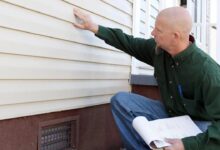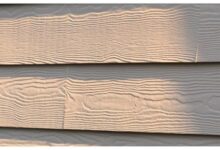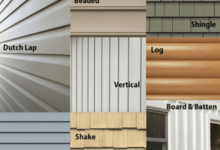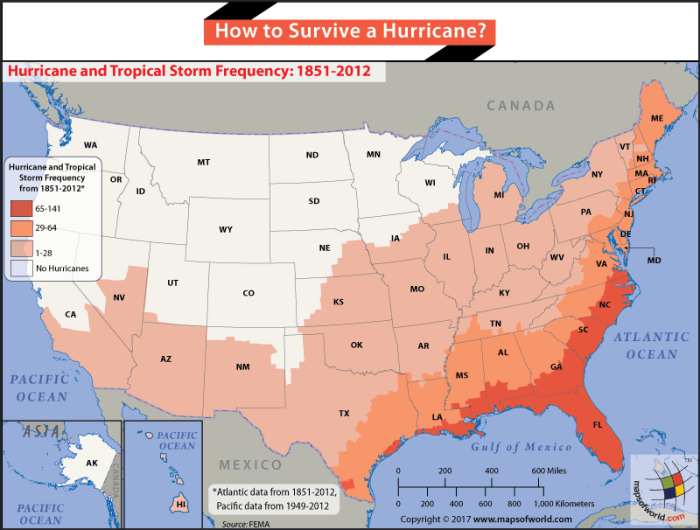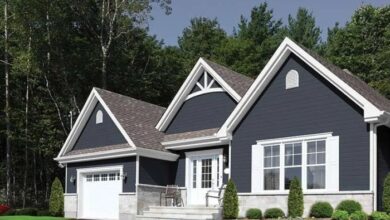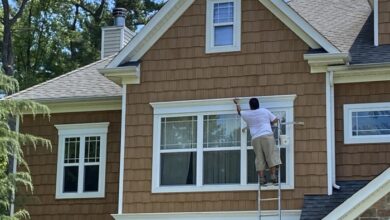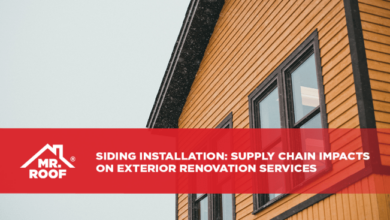Wood Siding Vs Vinyl Siding The Ultimate Showdown
Wood Siding Vs Vinyl Siding: Choosing the right exterior cladding for your home is a pivotal decision, impacting both aesthetics and longevity. This isn’t just about picking a pretty face; it’s about weighing durability, cost, maintenance, and environmental impact. We’ll delve into the nitty-gritty, comparing wood’s natural charm against vinyl’s low-maintenance appeal, revealing which reigns supreme for your specific needs and budget.
Get ready to uncover the secrets behind these two popular siding options, and discover which one truly deserves a place on your home.
From the initial cost comparison, encompassing materials and labor, to a deep dive into the lifespan and maintenance of each option, we’ll leave no stone unturned. We’ll explore their resistance to the elements, pests, and everyday wear and tear, examining their environmental footprints and sustainability factors. We’ll even guide you through the installation process, helping you decide whether a DIY approach or professional installation is best suited for your project.
Ultimately, this comprehensive comparison will empower you to make an informed choice, ensuring your siding investment stands the test of time and enhances your home’s value and curb appeal.
Initial Comparison: Wood Siding Vs Vinyl Siding
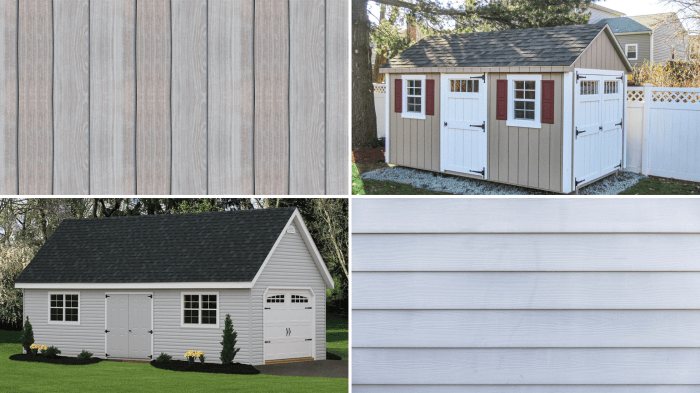
Choosing between wood and vinyl siding is a significant decision impacting your home’s curb appeal, longevity, and budget. This comparison delves into the key differences, helping you make an informed choice. Both materials offer distinct advantages and disadvantages, and the best option depends heavily on your priorities and budget.Aesthetic Appeal of Wood and Vinyl SidingWood siding offers an undeniable charm, radiating warmth and a classic, natural beauty.
The variations in wood grain, color, and texture create a unique, visually rich exterior. From traditional clapboard to more contemporary shiplap, wood provides a wide array of styles to complement any architectural design. Color options, while naturally limited to wood stains and paints, still offer a broad palette, allowing for personalization. Conversely, vinyl siding presents a more uniform appearance.
While it mimics the look of wood, it lacks the organic irregularities that give wood its character. However, vinyl offers a vast array of colors and styles, including textured finishes that attempt to replicate the look of wood grain, stone, or even stucco. This consistency can be advantageous for creating a clean, modern look.Cost Comparison of Wood and Vinyl Siding InstallationThe initial investment in siding significantly impacts the overall project cost.
Wood siding, while aesthetically pleasing, is generally more expensive than vinyl. This difference stems from several factors including material cost, labor intensity, and maintenance requirements. Vinyl is typically less expensive to purchase and install due to its ease of handling and quicker installation time. However, the long-term cost of ownership must also be considered, factoring in maintenance and potential repairs.
| Material | Labor | Total Cost | Notes |
|---|---|---|---|
| Wood Siding: $6-$15 per square foot | $3-$7 per square foot | $9-$22 per square foot | Costs vary greatly depending on wood type (e.g., cedar, redwood), grade, and finish. Labor costs can increase with complex installations. |
| Vinyl Siding: $2-$8 per square foot | $2-$5 per square foot | $4-$13 per square foot | Vinyl siding is generally less expensive due to lower material costs and faster installation. Labor costs may vary based on the complexity of the house’s design. |
Note: These cost estimates are averages and can vary significantly based on location, contractor, and project specifics. Always obtain multiple bids before making a decision. For example, a large, complex Victorian home will likely have higher labor costs than a simple ranch-style house, regardless of the siding material.
Material Properties and Durability
Choosing between wood and vinyl siding involves a careful consideration of their inherent properties and how they stand up to the test of time and the elements. Both materials offer distinct advantages and disadvantages, making the “best” choice highly dependent on your specific climate, budget, and aesthetic preferences. Understanding their durability characteristics is crucial for making an informed decision that will save you time, money, and headaches in the long run.Wood siding, a classic choice, possesses a natural beauty and warmth that many homeowners find irresistible.
However, this natural material requires significantly more upkeep and is susceptible to a range of issues that vinyl largely avoids. Conversely, vinyl siding offers a low-maintenance alternative, often boasting a longer lifespan with less intervention. Let’s delve deeper into the specifics of each material’s performance.
Lifespan and Durability Under Varying Weather Conditions, Wood Siding Vs Vinyl Siding
Wood siding’s lifespan is highly variable, ranging from 20 to 50 years depending on the wood type (cedar and redwood tend to last longer than pine), the quality of the installation, and the severity of the climate. In regions with extreme temperature fluctuations, intense sunlight, and high humidity, wood siding is prone to warping, cracking, and rotting. Regular maintenance, including painting or staining every few years, is essential to protect it from these environmental factors.
For instance, in coastal areas with high salinity, wood siding may require more frequent maintenance to prevent premature deterioration. Conversely, vinyl siding generally boasts a lifespan of 30-50 years, often exceeding that of wood in harsh climates. Its resistance to moisture, rot, and insect infestation makes it a particularly durable option in humid or rainy environments. Extreme cold poses minimal threat to vinyl, unlike wood which can become brittle and prone to cracking in sub-zero temperatures.
While extreme heat can cause expansion and contraction, leading to potential issues, vinyl’s inherent flexibility often mitigates this risk more effectively than wood.
Maintenance Requirements
Wood siding demands consistent care to maintain its appearance and structural integrity. This includes regular cleaning to remove dirt, mildew, and algae, and repainting or restaining every 3-7 years, depending on the climate and the type of finish used. Repairs, such as replacing damaged boards, are often necessary, adding to the overall maintenance cost. The cost of repainting a large house can easily reach several thousand dollars.
Vinyl siding, on the other hand, requires minimal maintenance. A simple occasional wash with soap and water is usually sufficient to keep it clean. Minor repairs, such as replacing damaged sections, are relatively easy and inexpensive. The reduced maintenance needs of vinyl translate to significant long-term cost savings compared to wood.
Resistance to Damage
Wood siding is susceptible to damage from impacts, such as hail or falling branches. It’s also vulnerable to insect infestation, particularly termites, and rot, especially in damp conditions. Regular inspections and prompt repairs are crucial to prevent widespread damage. For example, a single termite infestation can lead to extensive and costly repairs if left unchecked. Vinyl siding, however, is more resistant to impact damage, insect infestation, and rot.
While it can be dented or scratched, these damages are generally superficial and easily repaired. Its inherent resistance to moisture makes it a less appealing target for pests and greatly reduces the risk of rot. This inherent resilience translates to lower maintenance costs and a longer lifespan.
Environmental Impact and Sustainability
Choosing between wood and vinyl siding involves considering more than just aesthetics and durability; the environmental footprint of each material is a crucial factor. Both options have distinct impacts throughout their lifecycle, from manufacturing and transportation to eventual disposal. Understanding these differences allows for a more informed and environmentally conscious decision.The environmental impact of siding extends beyond the immediate construction phase.
Manufacturing processes, transportation logistics, and end-of-life management all contribute to a material’s overall carbon footprint and resource depletion. A comprehensive assessment necessitates examining each stage to determine the most sustainable option.
Manufacturing Processes and Embodied Carbon
Wood siding’s environmental impact begins in the forest. Sustainable forestry practices, such as selective logging and reforestation, significantly reduce the carbon footprint. However, the transportation of logs to mills, the energy used in milling and processing, and the potential for deforestation in unsustainable practices can negatively impact the environment. The embodied carbon—the total greenhouse gas emissions associated with a product’s entire lifecycle—of wood siding varies greatly depending on these factors.
Properly managed forests can lead to a lower embodied carbon compared to materials requiring extensive energy-intensive manufacturing processes. Conversely, vinyl siding’s manufacturing process is energy-intensive, relying heavily on fossil fuels. The production of polyvinyl chloride (PVC), the primary component of vinyl siding, releases significant greenhouse gas emissions and toxic byproducts. This contributes to a substantially higher embodied carbon compared to sustainably sourced wood.
Transportation and Distribution
The transportation of both wood and vinyl siding contributes to their environmental impact. Wood siding, often sourced regionally, may have a lower transportation footprint than vinyl siding, which is frequently manufactured in centralized facilities and shipped across longer distances. However, the weight and volume of wood siding can also influence transportation costs and emissions, making the overall impact a complex calculation.
The energy consumption associated with transporting heavier materials like wood across greater distances must be considered. The efficiency of transportation methods, such as utilizing rail or water transport, can also significantly influence the overall environmental impact.
Disposal and Recyclability
At the end of their lifespan, both wood and vinyl siding present disposal challenges. Wood siding, being a natural material, can biodegrade over time, although this process is relatively slow. In many cases, wood siding can be repurposed or used for other applications, reducing waste. Vinyl siding, on the other hand, is not readily biodegradable and requires specialized recycling facilities.
The recycling rate for vinyl siding is currently low, leading to significant landfill accumulation. Furthermore, the incineration of vinyl siding releases harmful toxins into the atmosphere. The lack of widespread recycling infrastructure for vinyl siding poses a significant environmental challenge compared to the comparatively easier management of wood waste.
| Category | Wood Siding Impact | Vinyl Siding Impact | Notes |
|---|---|---|---|
| Manufacturing | Variable; depends on forestry practices and milling processes. Potentially lower embodied carbon with sustainable sourcing. | High energy consumption, significant greenhouse gas emissions, and toxic byproducts during PVC production. High embodied carbon. | Sustainable forestry practices are crucial for minimizing the environmental impact of wood siding. |
| Transportation | Depends on sourcing distance and transportation method. Potentially lower impact with regional sourcing. | Often involves longer transportation distances due to centralized manufacturing, potentially higher emissions. | Efficient transportation methods, such as rail or water, can mitigate the impact. |
| Disposal & Recyclability | Biodegradable but slow; potential for repurposing or reuse. | Not readily biodegradable; low recycling rates; incineration releases toxins. | Improved recycling infrastructure is needed for vinyl siding to reduce landfill waste. |
Installation and DIY Considerations
Choosing between wood and vinyl siding involves more than just aesthetics; the installation process significantly impacts the overall cost and timeline of your project. Understanding the nuances of each material’s installation, including the required skillset and potential pitfalls, is crucial for a successful outcome, whether you’re tackling the job yourself or hiring a professional. This section delves into the practical aspects of installing both wood and vinyl siding, providing insights for DIY enthusiasts and those seeking professional assistance.
Wood Siding Installation
Installing wood siding demands a higher level of skill and precision compared to vinyl. It requires a strong understanding of carpentry, including measuring, cutting, and fastening techniques. The process typically involves preparing the wall surface, installing furring strips for proper ventilation, and then attaching the siding boards using nails or screws, ensuring proper overlap and alignment. Specialized tools such as a circular saw, miter saw, nail gun, and level are essential.
Improper installation can lead to issues like warping, rotting, and water damage, significantly impacting the longevity and aesthetic appeal of the siding. Furthermore, the need for regular maintenance, including painting or staining, adds to the overall long-term commitment.
Vinyl Siding Installation
Vinyl siding installation, while seemingly simpler, still requires careful planning and execution. The process involves preparing the wall surface, installing starter strips, and then interlocking the vinyl panels. While the interlocking system simplifies the installation, ensuring proper alignment and avoiding damage to the panels is vital. Common tools include a measuring tape, utility knife, and possibly a level.
While less technically demanding than wood siding, mistakes in installation can lead to gaps, uneven lines, and potential water infiltration. The relative ease of installation, however, makes it a more viable DIY option compared to wood siding, although professional installation ensures a flawless finish and minimizes the risk of errors.
Choosing a Professional Installer
Selecting the right professional installer is paramount for both wood and vinyl siding projects. For wood siding, experience with handling and installing different wood types, as well as a deep understanding of proper ventilation and moisture control, is essential. For larger projects or complex designs, seeking a contractor with extensive experience and a proven track record is crucial. Budgetary considerations should be factored in, with a clear understanding of the labor costs associated with each material and project scope.
Similarly, for vinyl siding, while seemingly easier to install, selecting a professional installer ensures a clean, consistent finish. Professional installers are equipped to handle intricate details, such as corners and windows, ensuring a professional aesthetic. Their expertise minimizes the risk of installation errors that could compromise the siding’s performance and longevity. Again, project size and budget play a crucial role in choosing the right installer.
DIY Installation Challenges
Undertaking a DIY installation of either wood or vinyl siding presents unique challenges. For wood siding, the difficulty lies in the precision required for cutting, fitting, and fastening the boards while maintaining consistent spacing and alignment. Lack of experience can lead to significant errors, resulting in an uneven finish or compromised structural integrity. Furthermore, the physical demands of working with wood siding can be strenuous.
You also can understand valuable knowledge by exploring Siding For Hurricane-Prone Areas.
For vinyl siding, while seemingly easier, ensuring proper alignment and avoiding damage to the panels during installation requires patience and attention to detail. Inaccurate measurements or improper handling can lead to gaps, damage, or an unsatisfactory aesthetic outcome. Regardless of the material, DIY installation requires a significant time commitment and can be challenging for those without the necessary experience and tools.
Weighing the potential time savings against the risk of costly mistakes is essential before embarking on a DIY project.
Insulation and Energy Efficiency
Choosing between wood and vinyl siding involves considering more than just aesthetics; energy efficiency plays a crucial role in long-term homeownership costs. Both materials offer different levels of insulation, directly impacting your heating and cooling bills. Understanding these differences is key to making an informed decision that aligns with your budget and environmental goals.Wood siding, while naturally a good insulator compared to other materials like metal, isn’t inherently a high-performance insulator on its own.
Its R-value, a measure of thermal resistance, is relatively low. This means that heat escapes more readily in winter and enters more easily in summer, leading to increased energy consumption for climate control. However, the insulating properties of wood siding can be significantly enhanced through proper installation and the addition of insulation behind the siding.
R-Value and Thermal Performance
The R-value of wood siding is typically low, ranging from R-0.9 to R-1.3 depending on the thickness and type of wood. In contrast, vinyl siding offers even less insulation, typically possessing an R-value of approximately R-0.6. This inherently lower R-value for vinyl means it offers less resistance to heat transfer, making it a less effective insulator than wood siding.
To illustrate the difference, consider a home with 1000 square feet of exterior wall space. Even a small difference in R-value can translate to significant energy savings over time, especially in climates with extreme temperature variations. A higher R-value means less energy is needed to maintain a comfortable indoor temperature.
Insulation Strategies for Improved Energy Efficiency
Improving the energy efficiency of a home with either wood or vinyl siding involves adding insulation behind the siding. For wood siding, installing rigid foam insulation boards directly to the exterior sheathing before applying the siding is a common and effective approach. This creates an effective thermal barrier, significantly increasing the overall R-value of the wall assembly. Similar strategies can be employed with vinyl siding; however, care must be taken to ensure proper ventilation to prevent moisture buildup, which is a critical concern with vinyl.
This often involves using a vented rainscreen system behind the vinyl siding, allowing for air circulation and preventing moisture problems that could lead to rot or damage. For both materials, the type and thickness of insulation used will directly impact the R-value and the energy savings achieved. Using higher R-value insulation, such as spray foam or dense-packed cellulose, will provide greater energy efficiency than standard fiberglass batts.
Impact on Energy Consumption
The impact on energy consumption is directly related to the overall R-value of the wall assembly, which includes the siding, insulation, and other components. A home with properly insulated walls, regardless of the siding material, will require less energy for heating and cooling. However, the initial R-value of the siding material contributes to the overall performance. Since wood generally offers a slightly higher R-value than vinyl, all other factors being equal, a home with wood siding may require slightly less energy for climate control.
This difference, however, is often overshadowed by the type and amount of insulation used. Proper installation and the addition of high-performance insulation are far more significant factors in minimizing energy consumption than the inherent R-value of the siding material itself. For example, a home with vinyl siding but extensive insulation may perform better than a home with wood siding but minimal insulation.
Visual Examples and Descriptions
Choosing between wood and vinyl siding often comes down to aesthetics. The visual impact of each material significantly influences a home’s overall curb appeal and architectural character. Understanding these differences is crucial for homeowners seeking to enhance their property’s value and style.The following examples illustrate the diverse visual possibilities offered by both wood and vinyl siding, showcasing how material choice can dramatically alter a home’s appearance.
We’ll examine color palettes, textural variations, and how these elements contribute to the overall architectural style.
Wood Siding Examples
Wood siding offers a timeless appeal, capable of creating a range of looks from rustic charm to sophisticated elegance. The natural variations in grain and color contribute to its unique character, which can be further enhanced through staining or painting.
- Example 1: A Classic New England Colonial. Imagine a two-story colonial home with clapboard siding painted a warm, creamy white. The subtle texture of the wood is visible, giving the house a lived-in, yet refined feel. The color choice complements the traditional architecture, creating a classic and inviting aesthetic. Dark green shutters and a contrasting black front door complete the look, emphasizing the home’s stately proportions.
- Example 2: Rustic Mountain Cabin. Picture a cozy mountain cabin clad in horizontally-laid cedar siding, stained a rich, dark brown. The natural grain of the cedar is prominent, adding warmth and texture. The overall aesthetic is rustic and inviting, perfectly complementing the surrounding natural landscape. A stone chimney and large windows enhance the cabin’s charming, rugged character.
This example demonstrates how wood siding can seamlessly integrate with natural surroundings.
- Example 3: Modern Farmhouse with Shiplap. Consider a modern farmhouse featuring white shiplap siding. The clean lines and uniform texture of the shiplap create a sleek and contemporary look, contrasting with the more rustic elements of the farmhouse design. The bright white color brightens the exterior, while black window frames and a dark grey roof provide a sophisticated counterpoint. This showcases how wood siding can be used to achieve a modern and minimalist aesthetic.
Vinyl Siding Examples
Vinyl siding, while offering a more uniform appearance than wood, still allows for a wide range of stylistic choices through color and texture options. Modern manufacturing techniques allow for remarkably realistic imitations of wood grain and other materials.
- Example 1: Traditional Ranch with Subtle Texture. Envision a single-story ranch house featuring vinyl siding that mimics the look of wood clapboard. The siding is painted a muted grey, offering a neutral backdrop that complements a variety of landscaping styles. The subtle texture adds depth without being overly distracting, maintaining a clean and understated aesthetic. This exemplifies how vinyl siding can achieve a classic look with low maintenance.
- Example 2: Contemporary Home with Smooth Finish. Imagine a modern, minimalist home with smooth, white vinyl siding. The lack of texture emphasizes the clean lines and geometric shapes of the architecture. The bright white color creates a fresh, airy feel, enhanced by large windows and a flat roof. This example highlights the versatility of vinyl siding in contemporary designs.
- Example 3: Victorian-Inspired Home with Detailed Molding. Picture a Victorian-style home with vinyl siding that mimics the look of wood shingles. The siding is painted a deep, rich burgundy, creating a dramatic and eye-catching exterior. Intricate vinyl molding around windows and doors adds architectural detail, replicating the ornate trim commonly found on Victorian homes. This demonstrates how vinyl can effectively capture the detail of more complex architectural styles.
Ultimate Conclusion
Ultimately, the “better” siding – wood or vinyl – depends entirely on your priorities. Wood offers unparalleled beauty and a classic appeal, but demands higher upfront costs and ongoing maintenance. Vinyl, on the other hand, provides a budget-friendly, low-maintenance alternative, albeit with a less natural aesthetic. By carefully weighing the factors discussed – cost, durability, environmental impact, and installation complexity – you can confidently choose the siding that perfectly complements your home’s style, your budget, and your lifestyle.
Remember to consider the long-term implications of your choice to ensure lasting satisfaction and a home you’ll love for years to come.

